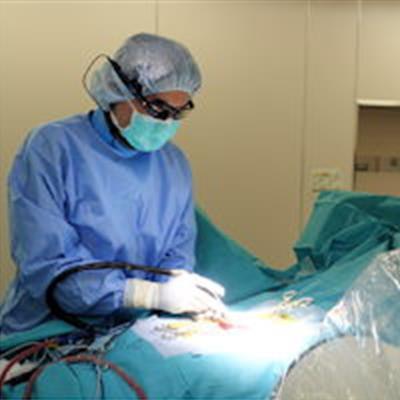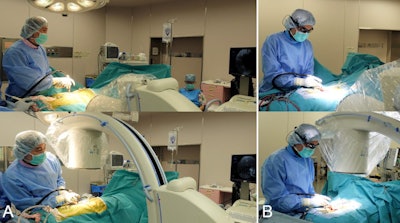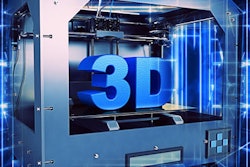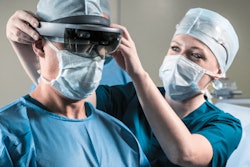
Japanese researchers have developed a device that when attached to normal eyeglasses can display fluoroscopic images used for spinal surgical guidance, meaning a surgeon no longer needs to repeatedly look across an operating room to a video monitor.
The eyeglass display device allows the surgeon to focus on operating tasks more efficiently and also results in a slightly shorter length of surgery as well as less exposure to radiation, according to Dr. Keitaro Matsukawa, PhD, and Dr. Yoshiyuki Yato, PhD, who published their findings on October 13 in the Journal of Neurosurgery: Spine.
The pair performed a pilot, prospective, randomized study of 20 patients who underwent posterior lumbar interbody fusion at the L5-S1 spinal level. The study is the first to examine the feasibility of using a wearable display device for fluoroscopically guided minimally invasive spinal instrumentation surgery, according to the researchers.
For the study, the same surgeon performed all the procedures using a percutaneous pedicle screw technique. In half the cases, the surgeon wore glasses with the attached device (picoLinker device, Westunitis), which wirelessly displayed real-time fluoroscopic images. In the other half, the surgeon instead frequently consulted the fluoroscopy monitor that was positioned elsewhere in the operating room.
 (A) The surgeon views the standard fluoroscopic monitor by turning the head away from the surgical field. (B) The surgeon uses the smart glasses display device as an alternative method to display fluoroscopic images, and so the surgeon's focus can be maintained on the surgical field. Image courtesy the American Association of Neurological Surgeons.
(A) The surgeon views the standard fluoroscopic monitor by turning the head away from the surgical field. (B) The surgeon uses the smart glasses display device as an alternative method to display fluoroscopic images, and so the surgeon's focus can be maintained on the surgical field. Image courtesy the American Association of Neurological Surgeons.The surgeon turned toward the fluoroscopy monitor significantly fewer times while wearing the eyeglass-attached fluoroscopic display device: 0.1 ± 0.31 times versus 82.4 ± 32.5 times. The surgery's duration was shorter wearing the glasses (100.2 ± 10.4 minutes versus 105.5 ± 14.6 minutes), and so was the length of radiation exposure (38.6 ± 6.6 seconds versus 41.8 ± 16.1 seconds).
An eyeglass-attached fluoroscopic display device "may be a valid option to enhance the surgeon's ability to concentrate on operative tasks by improving ergonomic efficiency during surgery," Matsukawa and Yato said. "We believe the major advantages are 'concentration' and 'information centralization.' ... The eyeglass-attached display device can be a great tool to help surgery progress smoothly and safely."


















